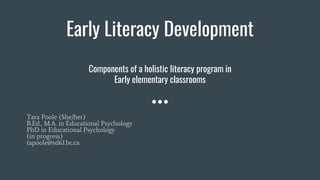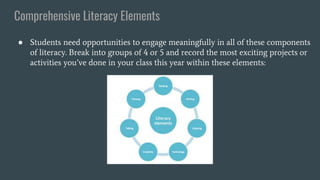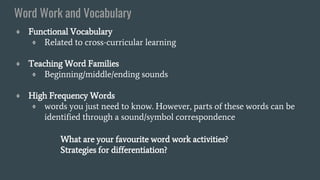Tara Poole presents on components of a holistic early literacy program. She acknowledges the traditional territories of local First Nations and emphasizes building relationships through trauma-informed practice. Literacy is defined as understanding, analyzing, and communicating through diverse texts for various purposes. A comprehensive literacy program includes building background knowledge, language development, phonological awareness, phonics, reading time, fluency, comprehension, and assessment. Phonological awareness involves hearing sounds in words while phonemic awareness involves hearing individual sounds. Explicit instruction is needed in concepts of print, phonological awareness, phonemic awareness, phonics, word work, vocabulary, comprehension strategies, fluency, and ensuring access to decodable books. Assessment, goal setting, and

























